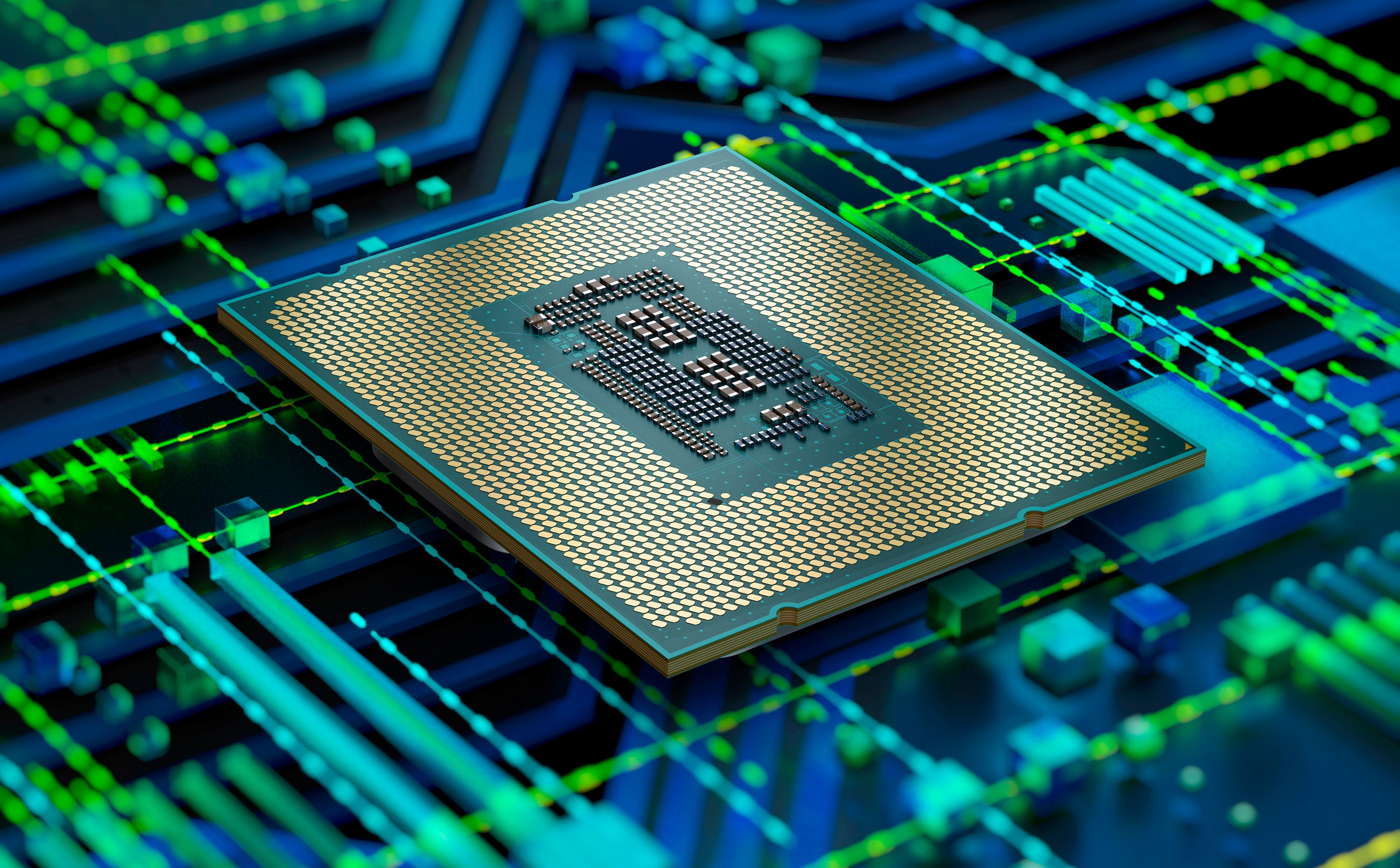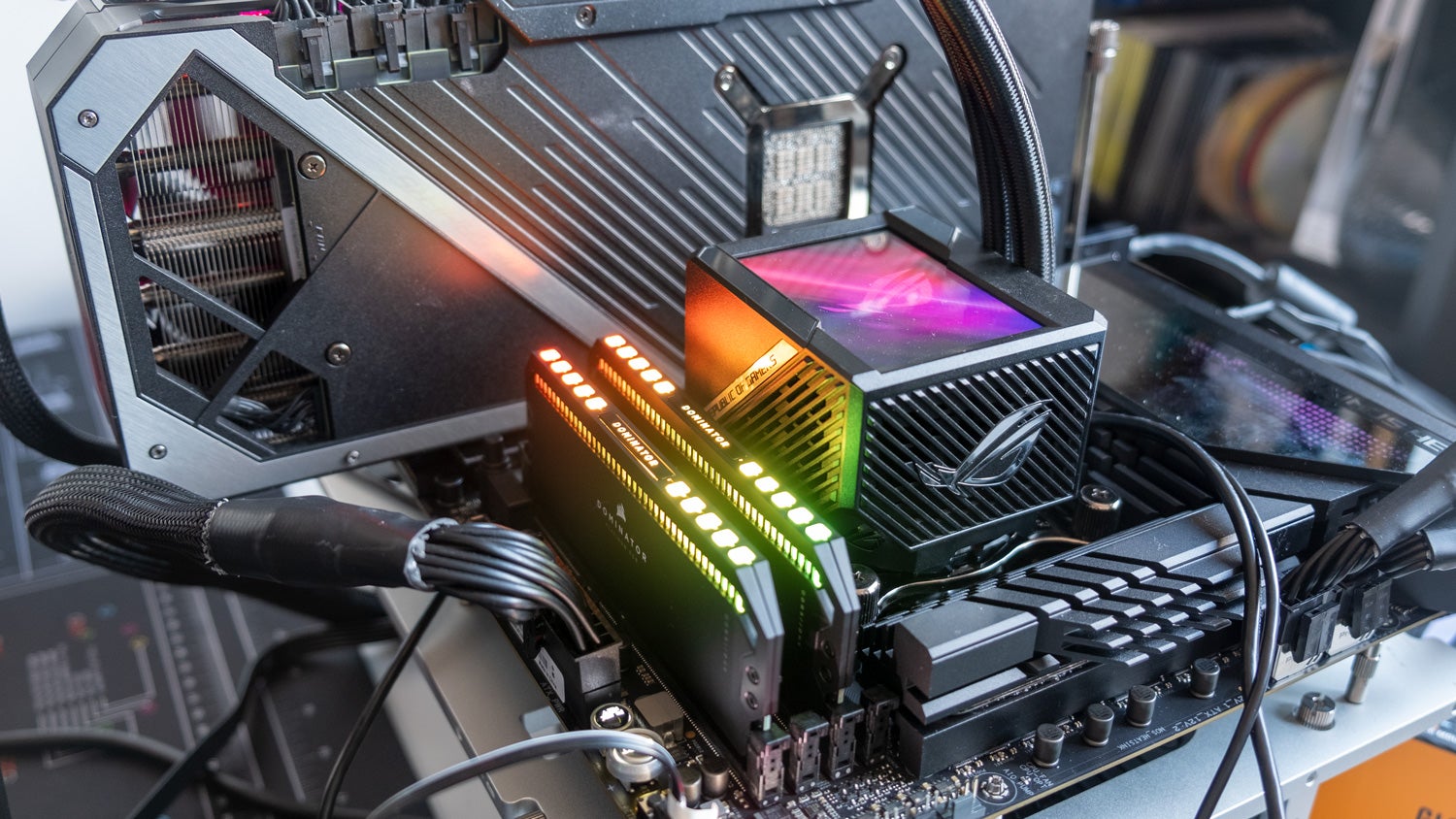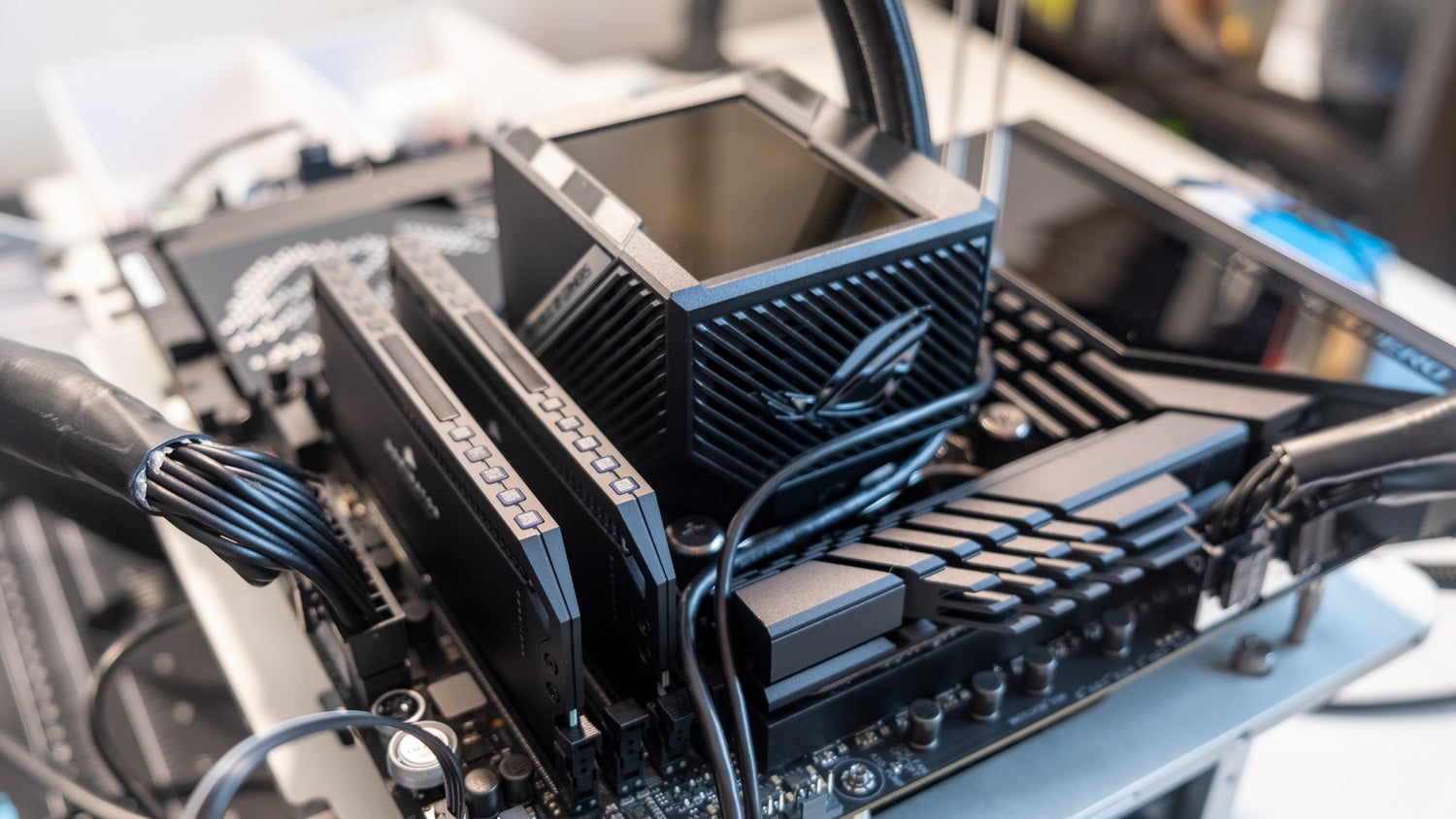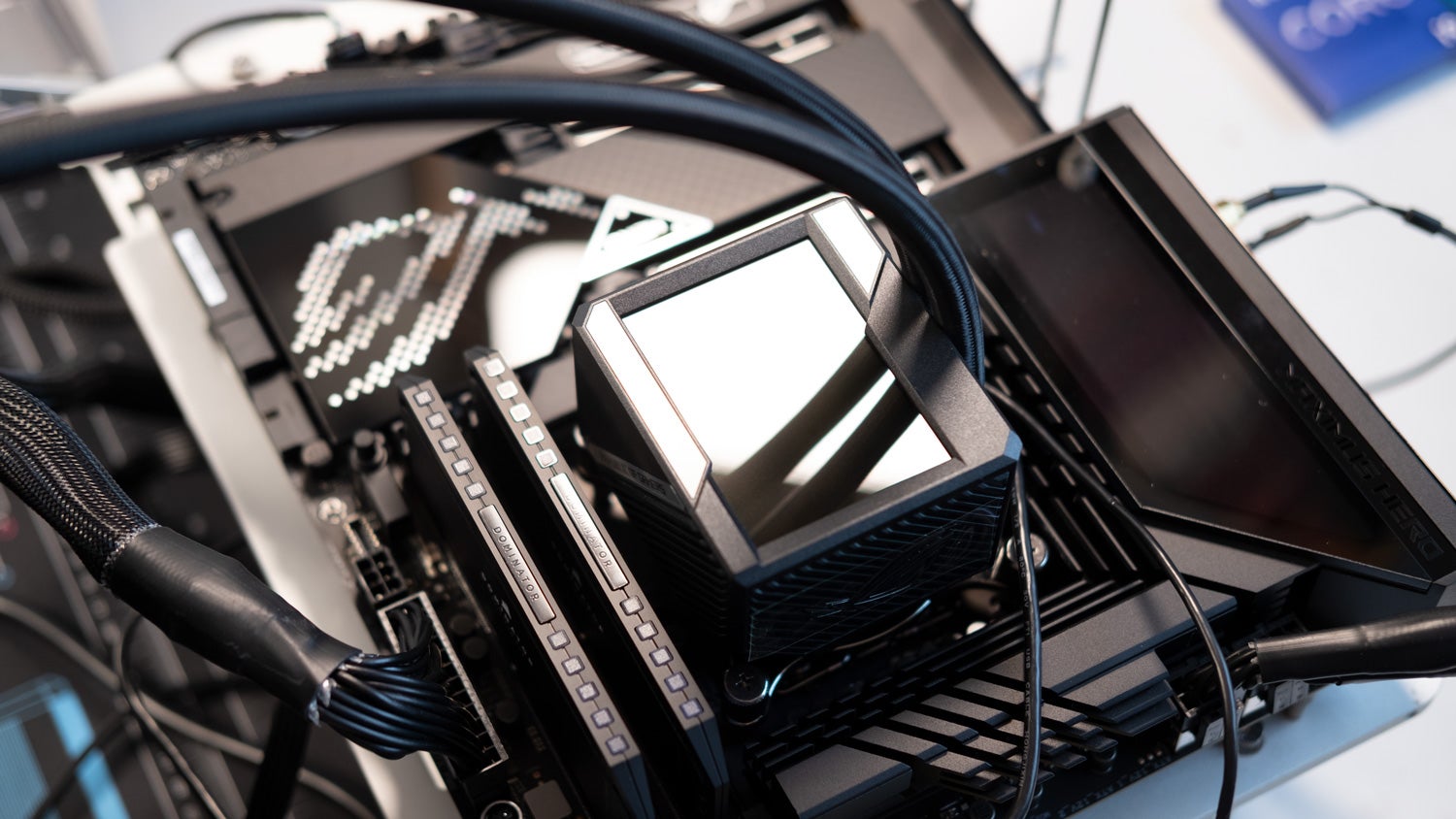Looking at the specs for each CPU in the table below, you can see that the logic behind the 12900K/12700K and the 12600K/12400F pairings. In each case, we have the same number of hyper-threaded Performance cores - eight for the high-end (i9/i7) parts and six for the mid-range (i5) offerings - with four fewer Efficient cores in the lower-end example. That means moving from eight E-cores in the 12900K to four in the 12700K, while the 12600K’s four E-cores turn into zero E-cores on the 12400F.
As well as having fewer E-cores for background tasks to run, L3 cache sizes and maximum turbo clocks are reduced as you go down the stack. It’ll be fascinating to see how these changes affect gaming and content creation performance. We also expect to see an effect on thermal output, with the cheaper chips likely running cooler and therefore requiring less intense cooling apparatus to run at their best.
As a recap, the 12700K and 12400F require 600-series Intel motherboards. These support Alder Lake’s new taller CPUs with the LGA 1700 socket, PCIe 5.0 and either DDR4 or DDR5 RAM. We think that DDR4 will prove the better value option in the here and now, while DDR5 boards will come into their own months or years later. The new chips rely on Intel’s Thread Director and the Windows 11 OS to put performance-critical gaming or content creation tasks on the P cores, while background tasks like updates or streaming run on the E cores. The new CPUs do work on Windows 10, but you’ll see reduced performance as running programs can’t be assigned to the correct cores as intelligently.
We’re using the Asus ROG Maximus Z690 Hero, a premium Z690 motherboard with DDR5 support. We tested two dual-channel RAM kits: a 32GB Corsair DDR5-5200 CL38 Dominator Platinum kit with fancy RGB lighting and 32GB Crucial DDR5-4800 CL40 kit that looks a little more basic but costs less. Our other motherboards used the fastest DDR4 we had on hand: a 3600MHz CL16 G.Skill Trident Z Royal kit. This memory hits much lower frequencies, but it does offer significant better timings and costs less too, so it’ll be interesting to see how it performs in a Z690 DDR4 board once we get one in house to test.
The Asus board is one of the most expensive Z690 options out there, retailing for around £520/$600, but includes one of the thickest VRM heatsinks I’ve ever seen, an impressive 20+1 power stages and two Thunderbolt 4 ports. There are also some unique features, including a quick release button for the primary PCIe slot for faster removals (great for GPU testing!), screw-less M.2 SSD mounting and an ‘ROG Hyper M.2’ PCIe 5.0 card - neat.
Elsewhere, we used an Asus ROG Maximus Z590 Hero for testing 11th-gen processors and an Asus ROG Crosshair 8 Hero for our AMD Ryzen 5000 CPUs. These CPUs were cooled with an Eisbaer Aurora 240mm AiO, while the 12th-gen testing was conducted with the included Asus ROG Ryujin 2 360mm AiO. (And to answer the obvious question: 240mm and 360mm AiOs tend to provide equivalent performance based on our testing - especially for an open air test bench in cool (21C) ambient conditions. The only difference tends to be fan speed, which is higher on the 240mm than the 360mm.) Our rig was completed with a 1000W Corsair RM1000x power supply from Infinite Computing.
In order to put the new Intel chips through their paces, we’re using the Asus ROG Strix 3090 OC Edition. This is a massive three-slot, triple-fan design that keeps the card surprisingly cool and quiet, especially compared to the more modestly-sized 2080 Ti Founders Edition. This should help reduce run-to-run variance and ensure we’re CPU-limited as much as possible. The RX 6900 XT would have been a serviceable alternative, but with three RT-based games in our lineup Nvidia’s better performance in these titles makes it an obvious choice.
We used a fresh install of Windows 11 for our testing on a (£196/$160) 1TB PNY CS3140 PCIe 4.0 SSD. All of the latest BIOS updates and Windows updates were installed, as well as AMD’s latest chipset driver for testing the Ryzen 5000 processors; likewise all games used were their most recent versions. (Note that this new platform means that our results here aren’t comparable with our past Ryzen 5000 or Intel 11th-gen reviews.)
It’s important to note that we tested with Multi Core Enhancement (MCE) enabled on all Intel motherboards. With the abolishment of turbo limits in Intel’s 12th-gen guidance, it’s clear that the chip maker realises that its motherboard partners - and therefore its users - tend to use their processors like that anyway. However, this does mean that these CPUs likely generate more heat and consume more power than their listed power figures, so you will need to factor in the cost of a reasonable motherboard, good power supply and a strong cooling solution to get similar results.
Cinebench tests both single and multi-threaded performance, which can make it a useful predictor of later gaming performance - for example, a CPU that boasts a high single-core score here is likely to do well in games that rely on a single thread for the bulk of their computation, like Far Cry 6. Intel promised a substantial single-core performance boost with 12th-gen and both of the new CPUs deliver the goods. The 12700K is within four percent of the 12900K and around 15 percent ahead of even the top-end Ryzen 9 5950X. The 12400F may be the slowest 12th-gen part we’ve tested, but it also outperforms every Ryzen and 11th-gen Intel part in terms of single-core speeds. It’s 20 percent faster than last year’s Core i5 11600K, which represents a pretty solid generational advancement.
The multi-threaded scores also benefit from the single-core speed advantage in 12th-gen, with the 12700K’s 20 cores managing a score of 8683, comfortably ahead of the 5902 managed by the 16-core 11900K (a 47 percent advantage). The 12400F also acquits itself well, with a 4736 result that outpaces the Ryzen 5 5600X by around 200 points or five percent. If this translates into gaming performance, we should be looking at CPUs that outperform AMD’s best (and their Intel predecessors) while costing less. Let’s not get ahead of ourselves though, as our second content creation test results are worth discussing too.
That second test is our Handbrake transcode benchmark, where the 12700K slots in perfectly between the 12900K and 12600K - 58fps for the h.264 export and 26fps for the HEVC export. For context that’s nearly identical to the Ryzen 9 5900X results we recorded on our Windows 10 system, although of course that was on a different OS and with DDR4 RAM. Still, it shows that the 12700K would make for a capable production system, if not really competing with the 70fps h.264 result of the workstation-grade Ryzen 9 5950X or full-fat Core i9 12900K. Peak power usage during the HEVC export is also reasonable, at 318W, compared with closer to 375W peak for the 12900K. AMD’s Ryzen CPUs remain more efficient though, with the Ryzen 9 5950X system recording just 237W at the wall during its HEVC encode.
Meanwhile, the 6P+0E 12400F is around 70 percent of the speed of the 6P+4E 12600K in terms of the Handbrake exports, while consuming 85 percent of the power. However, that’s still marginally ahead of the Ryzen 5 5600X, a CPU which costs more (but tends to be used with cheaper B550 or X570 motherboards). Higher core count processors always tend to do well in these sort of easily parallelisable tasks, but the 12400F is surprisingly solid and in fact the fastest true six-core processor that we’ve ever tested in this benchmark - neat.
It’s impressive stuff for sure, but let’s take a look at the real meat and potatoes now - the gaming results. We tested the new chips in eight titles here, including several games that debuted with our earlier 12900K and 12600K reviews. We’ve also taken a quick look at memory performance here, ahead of our full-on DDR5 vs DDR4 testing. Choose your adventure from the options below, or simply click on the Next button to move onwards.
Intel Core i7 12700K and Core i5 12400F analysis
Introduction, test rig and content creation benchmarks [This Page] Gaming benchmarks: Flight Simulator 2020, Hitman 3 Gaming benchmarks: CS:GO, Metro Exodus EE, Black Ops Cold War Gaming benchmarks: Cyberpunk 2077, Far Cry 6, Crysis 3 Remastered Gaming benchmarks: Memory bandwidth analysis Intel Core i7 12700K and Core i5 12400F: the Digital Foundry verdict






